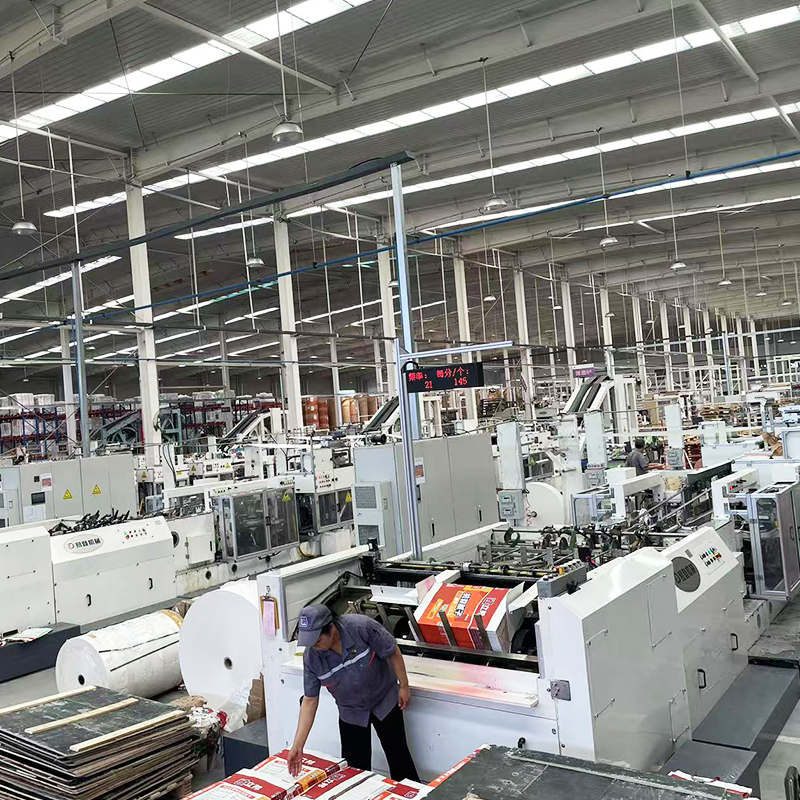Revolutionizing Sustainability: Cutting-Edge Energy-Efficient Paper Bag Manufacturing Systems
Release time:2025-05-14 Classification:Knowledge
The global shift toward eco-conscious consumerism has driven unprecedented demand for sustainable packaging solutions. Among these, paper bags have emerged as a preferred alternative to single-use plastics, prompting manufacturers to innovate production processes that align with environmental goals. At the forefront of this transformation are advanced energy-saving paper bag manufacturing lines, engineered to optimize efficiency, reduce carbon footprints, and deliver high-quality outputs. This article explores the technological advancements and operational benefits of these systems, highlighting their role in fostering sustainable industrial practices.

1. The Imperative for Energy Efficiency in Paper Bag Production
Paper bag manufacturing traditionally involves resource-intensive processes, including pulp preparation, sheet forming, printing, and finishing. Conventional systems often rely on high energy consumption for drying, cutting, and heat-sealing, contributing to elevated operational costs and environmental impact. Modern energy-saving manufacturing lines address these challenges through integrated technologies that minimize waste, streamline workflows, and prioritize renewable energy integration. By reducing power consumption by up to 40% compared to older models, these systems set new benchmarks for sustainability without compromising productivity.
2. Core Components of an Energy-Efficient Production Line
A state-of-the-art paper bag manufacturing line incorporates multiple subsystems designed to work synergistically while conserving energy. Key innovations include:
a. High-Efficiency Drying Systems
Advanced infrared or convection drying units replace traditional gas-powered systems, slashing energy use by optimizing heat distribution. Precision temperature controls ensure rapid moisture removal while preventing over-drying, a common source of material waste.
b. Automated Precision Cutting and Forming
Servo-driven cutting machines minimize energy spikes by operating only during active cycles. Laser-guided alignment systems reduce material misalignment, ensuring minimal scrap generation.
c. Intelligent Power Management
Smart sensors and IoT-enabled controllers monitor energy consumption in real time, adjusting motor speeds and heating elements based on production demands. This dynamic load management prevents idle power drain and extends equipment lifespan.
d. Waste Heat Recovery
Innovative heat exchangers capture excess thermal energy from drying or sealing stages, repurposing it for preheating raw materials or facility heating. This closed-loop approach enhances overall energy utilization.
3. Operational Advantages of Energy-Saving Systems
Adopting an energy-efficient paper bag manufacturing line offers tangible benefits for producers and the environment alike:
- Reduced Carbon Emissions: Lower energy consumption directly translates to decreased reliance on fossil fuels, aligning with global carbon neutrality targets.
- Cost Savings: Enhanced energy efficiency cuts utility expenses by 25–35%, improving profit margins in competitive markets.
- Enhanced Product Quality: Consistent temperature and pressure controls yield uniform bag strength and print clarity, meeting stringent industry standards.
- Scalability: Modular designs allow manufacturers to expand capacity incrementally, avoiding overinvestment in underutilized machinery.
4. Sustainable Material Integration
Modern systems are compatible with recycled and FSC-certified papers, further bolstering their eco-friendly credentials. By combining energy-efficient processes with sustainable raw materials, manufacturers achieve a dual environmental impact: reducing both operational emissions and deforestation pressures.
5. Future Trends in Energy-Efficient Manufacturing
The next generation of paper bag production lines is poised to integrate breakthroughs such as:
- AI-Driven Predictive Maintenance: Machine learning algorithms anticipate equipment wear, scheduling repairs before failures occur, thereby avoiding unplanned downtime.
- Renewable Energy Hybridization: Solar or wind-powered subsystems could further decouple production from grid dependency.
- Biodegradable Coating Applications: Water-based adhesives and plant-derived coatings will replace petroleum-based laminates, enhancing compostability.
6. Conclusion
The transition to energy-saving paper bag manufacturing lines represents a critical step toward sustainable industrialization. By merging cutting-edge engineering with ecological responsibility, these systems empower manufacturers to meet rising consumer expectations while adhering to regulatory frameworks. As technology evolves, continued innovation in energy efficiency will solidify paper bags as a cornerstone of the circular economy, proving that profitability and planetary stewardship can coexist seamlessly.
Investing in such systems is no longer optional but a strategic imperative for businesses committed to long-term viability in an era defined by climate action and resource consciousness.






